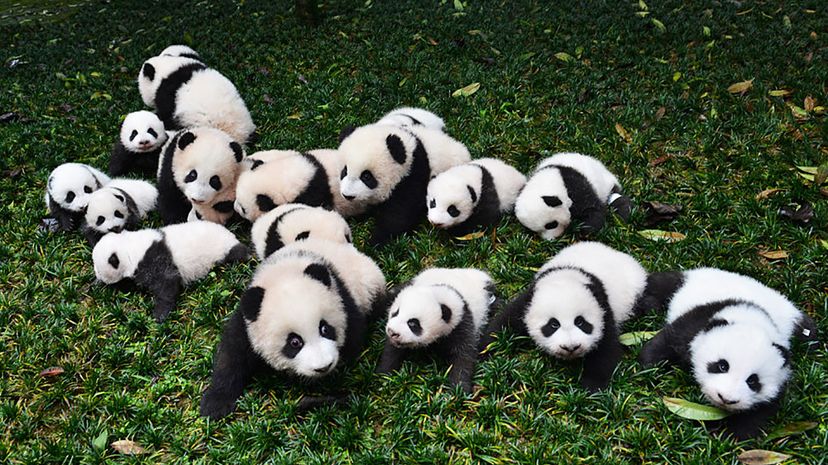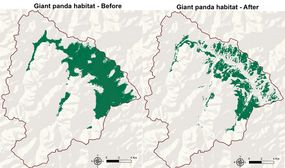To understand why wild pandas have been threatened for so long, we must also understand their unique dietary and habitat needs.
Panda bears eat only bamboo, and consequently can only thrive in bamboo forest and mixed forests with high concentrations of the food source. These areas have been under threat by human activity throughout the 20th and 21st centuries.
In ancient times, wild populations of giant pandas were known to extend to much of southern China, down to Vietnam and Myanmar, but large-scale climate change at the end of the ice age and deforestation by humans caused major habitat loss.
Today, pandas live in the Sichuan, Shaanxi, and Gansu provinces of China.
As large animals, giant pandas have very few natural predators but may be vulnerable to attacks from other animals like bears, snow leopards, and feral dogs. Historically, humans have hunted pandas for their fur, but thanks to their threatened species status, killing or maiming pandas — or trading in their pelts — may be punishable by the Chinese government.
Because the bamboo pandas eat has low nutritional density, they must consume a large amount of it every single day. As a result, pandas take a long time to digest their food and don't live a very active lifestyle.
Pandas' Mating Habits
Another factor in the dwindling giant panda population is that they often don't produce enough cubs to sustain themselves. Female pandas are typically only fertile for a few days of the year, which means they may go multiple years between pregnancies.
The females may give birth to one or two cubs at a time, but only have the energy to take care of one. In the wild, the second cub is often left abandoned.



